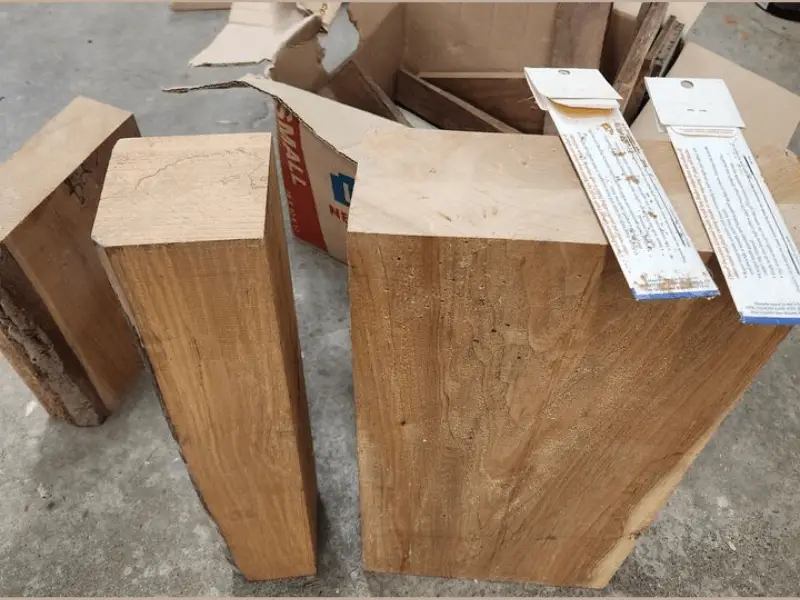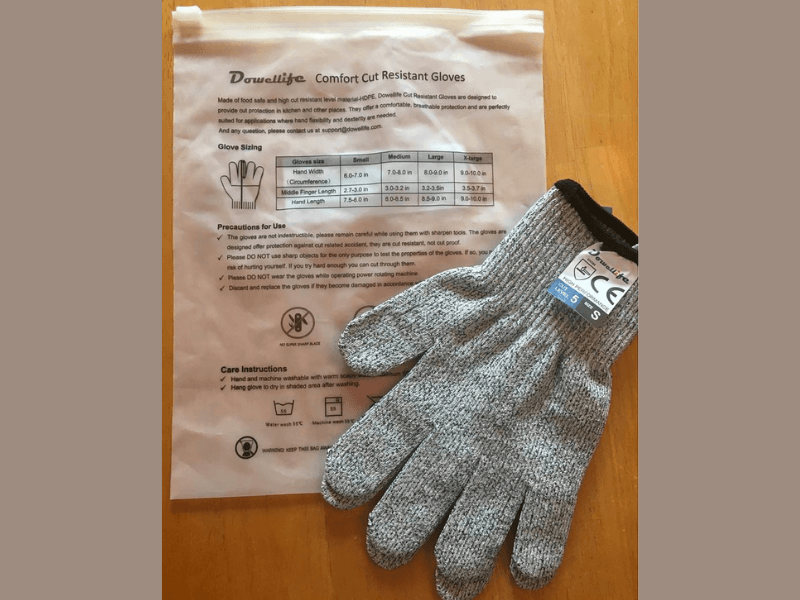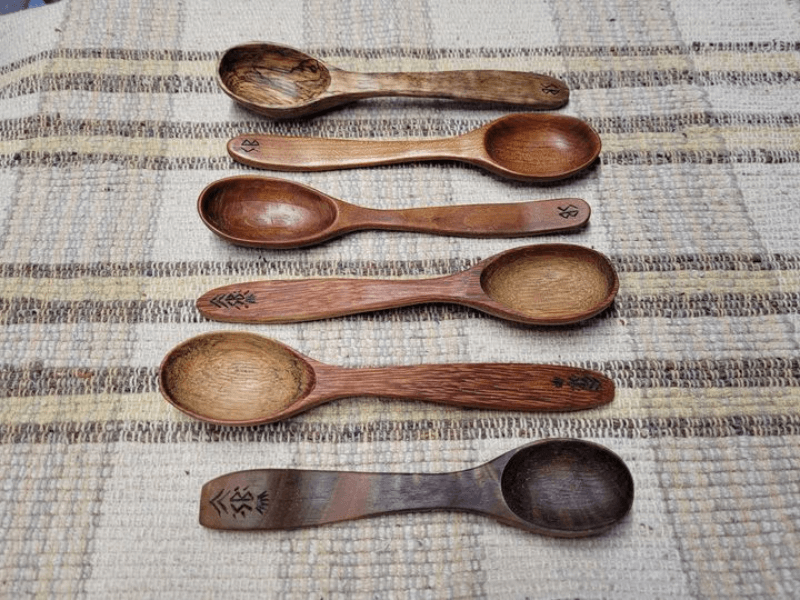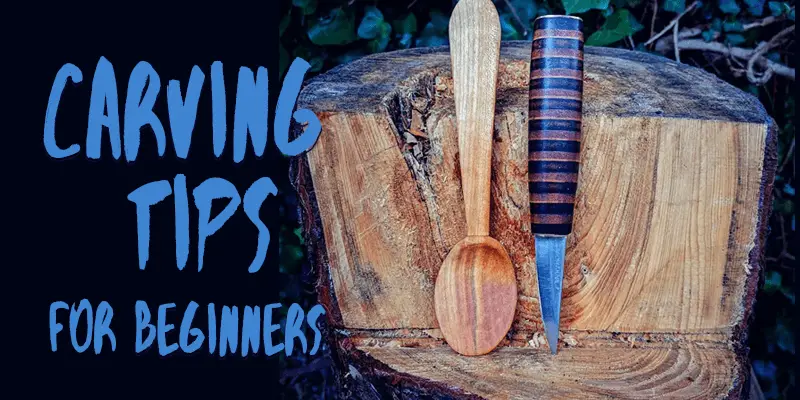Wood carving is easy to get into, but that’s easier said than done. So what are some wood carving tips for beginners? Do you buy the tools first or learn the skill or both? If you have been asking yourself such questions, you are in the right place.
In this article, we take a look at
- Where to learn woodcarving
- woodcarving tools for beginners
- woodcarving for beginners: tips
So without further ado, where do you start as a beginner?
Where To Learn Woodcarving
Today technology provides multi options for newbies. It’s not like a few decades ago when the options were traditional class or apprenticeship. There are a lot of websites, youtube channels, and masterclass courses. But the many options are overwhelming for a beginner. I mean, where do you start? Who should you trust?
In this section, we will review some good places to start.
Membership and masterclass courses
Enrolling in an online masterclass course is one of the best ways to learn the fundamentals of woodcarving. With top seasoned carvers like Chris Pye and Mary May offering courses in their membership plan, there is no excuse for not knowing the craft from the best in the game.
These masterclasses are usually pre-recorded, carving all the basics of carving, and include bonus skills like sharpening carving tools.
Enrolling in a master’s class is the best chance of getting an all-rounded first-time learning experience.
The downside to this method is its cost. These classes are expensive for someone starting on a budget. Our Option 2 is perhaps a more pocket-friendly approach.
Learning wood carving from youtube
Youtube videos are an excellent way to learn wood carving. They are visual, easy to follow, and enjoyable. Videos are an excellent option for someone looking for a casual way of learning wood carving.
With youtube, it’s not about who is best but who you connect to better. Connecting with your instructor is essential and helps ease the rate you take in the knowledge.
When looking for an excellent channel to learn carving make sure they have many videos, and the length of each is considerably lengthy. Short videos summarize the main steps and are not as beginner-friendly since they don’t exhaust a topic well.
Learning from Articles
Another great way to learn about woodcarving is via web articles. For example,at improvewood.com, we do our best to provide the best and most accurate information on wood carving and woodworking in general. Our articles include tips on improving skills as well as step-by-step and how-tos.
Enough chest-thumping, Whittlingcave is another excellent place to learn to carve. However, They are more focused on the art of whittling, a subcategory of woodcarving. With that said, they still carve the fundamentals of woodcarving.
Reading Wood carving books
If Videos and articles are not an in-depth learning method, and masterclass courses are a bit pricey, then a good book is the perfect option for you.
Learning a craft from a book is not as dull as most people think. It can be enjoyable and instructive. The power of books lies in the reader’s imagination; the impact is, therefore, significant.
If you find yourself distracted when reading a book, try to relax and imagine the author having a conversation with you. The more you listen to the author, the better you connect with the concepts they are explaining.
To get yourself started with woodcarving books check out these articles: best carving books for beginners and the best whittling books for beginners. They cover everything about good books for carving.
Your first toolkit

Knowing what tools you will be using in your new craft is essential. It’s advised that you buy the tools before starting so that you can practice as you learn once you get started.
But buying tools in a new craft that you barely know anything about can be intimidating. What if I buy something I don’t need or, even worse, buy some cheap knockoffs that won’t make it to the second week of carving?
We have all been there worried that we may get dupped because of not knowing. Carving is not an expensive hobby, or at least it doesn’t have to be. With a few tools, you can get started quickly.
best carving wood for beginners

Wood is our primary material as woodcarvers. Understanding wood as one understands the carving tools is vital for any beginner. Understanding wood helps the carver have a better experience while carving.
Wood for carving is in two main categories softwood and hardwood. We will go through each below.
Due to the temptation of carving found, woodcarvers need to know how to identify wood in hardwood and softwood. As a result, we’ve written an article about the best wood for carving to help you get started.
Hardwoods Deciduous
Carving hardwoods is easy and friendly; don’t let the name fool you. The grain is tightly packed and therefore supports detailing. On top of this, hardwoods will last way longer than their counterparts though this may vary in different species.
Hardwoods are not only preferred for their ability to hold detail but for their aesthetics and how well they accept the finish. Carving some of the hard grains of species like oak and sycamore can be challenging. Beginners should go with the easy and soft hardwood called Basswood. Basswood, or as known in Europe as limewood, is very beginner-friendly and an excellent place to start.
Identifying hardwoods is not hard. Just look at the leaves. The broad ones are the hardwoods. Most fruit trees are hardwoods.
What about softwoods?
Softwoods are still carvable but are usually very hard to carve. How is that possible if they are ‘soft’?
Well, the softness is from the structure of the grain. Softwood is spacely structured with open pores. Such a structure tends to tear instead of cut. A sharp and low bevel angle is recommended when carving softwoods.
Some softwood is carver friendly and is even preferred by some whittlers. Such softwoods are like aromatic pine cedar, among other coniferous species. When collecting logs and sticks, ensure the wood has a tiny or no pith. A big pith is an indication of undesired carving wood.
What wood is suitable for beginner carving?
As stated above, Basswood is the best wood for a beginner. It is soft enough to carve with hand tools, including knives! Basswood, as soft as it is to carve, holds detail remarkably well since it’s a hardwood.
Apart from this, Basswood will work with most finishes and take paint nicely. Such makes it a top choice wood for beginner carvers.
You can order Basswood online as small blocks. These basswood blocks are great for newbies to practice cuts and probably whittle beginner projects.
As you advance, you can try other woods that are still good for carving but vary in Jenka’s hardness. Such woods are cherry, pine, cedar, mahogany, apple tree, and hickory, among many more.
Safety first
Safety is the aspect that most beginners assume. Working with sharp objects poses a danger. It’s hence vital to protect yourself from harm while learning.

While one can keep an eye on the cutting edge, extra protection is still required and can save you a trip to the hospital. Carving Gloves, in this case, can help reduce the cutting-edge’s force coming into contact with your hand.
It may seem that such kinds of injuries are rare, but they happen a lot. Go to popular wood carving forums, and once in a while, you will see a carver showing an accident that happened and leaving them going for stitches.
Is it hard to learn wood carving?
Wood carving is not as hard as it may seem at first. With the right tools and attitude, the skill can be quickly learned.
You must adjust your attitude towards this craft. A positive mentality will help gain an early interest in learning the art.
The tools also determine whether the learning will be hard or easy. The right tools for the job will always give satisfaction to the learner. With a sharp carving knife, a beginner whittler will easily achieve his artistic imagination.
On the other hand, a beginner with a dull knife will wonder why the Basswood is not easy to carve, as we recommended. Being alert and observing to ensure you have the right tool and are as sharp as needed can help a learner greatly improve his skills with minimum frustrations.
What should I carve as a beginner?
If you are looking for a good project to teach you the basic cuts, grain direction, and how wood behaves when carved, I suggest a spoon.

Carving a spoon is easy yet very interesting! Many beginners will mistake picking a complicated project as their first. The result is a disappointing experience because they could not achieve as imagined.
The best approach is to pick something achievable but not too simple. Too simple would be sharpening a pencil, LOL. A spoon is simple but will allow you to use and learn different tools and techniques.
How long does it take to learn to carve wood?
With great planning, whittling can be learned relatively first. Some carving forms, like chip carving, can be learned in just a few days.
However, some techniques and styles take months or even years to master in carving. What is important is starting with the simple carving techniques like spoon carving or chip carving and acquiring information on surrounding styles and techniques with time.
Wood carving tips for beginners: A summary
Wood carving is a craft that is easy to learn. These wood carving tips for beginners help a beginner get an edge when getting started with this craft.
The most important thing is to remember and mind your safety. Investing in a good cut-resistant glove will save you time and agony.
Using sharp tools is vital and you should learn how to sharpen your tools and keep on practicing to master the concept of sharpening.
Though not mentioned above, Join a woodcarving forum! Learning together with others goes a long way to psyching you up in learning your new crat. There are many forums on Reddit and Facebook dedicated to beginner carvers.
Finally, there are many resources available where you can learn wood carving. Just have the right mindset, and soon you will be carving beautiful woodcarvings of your own. Good luck and happy carving!

